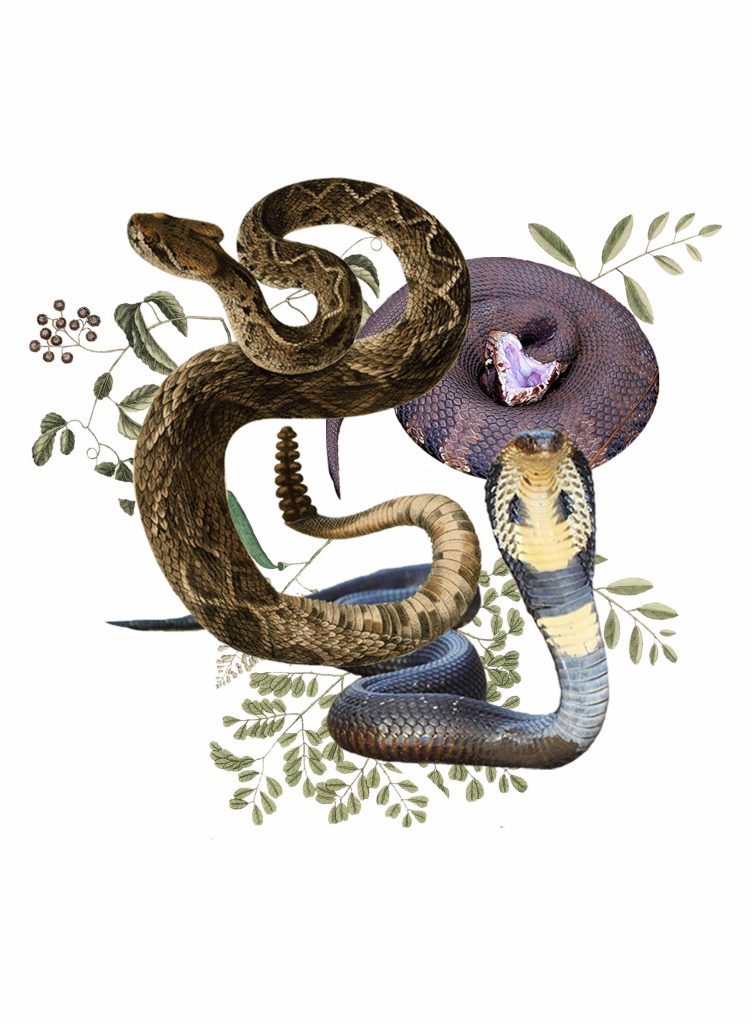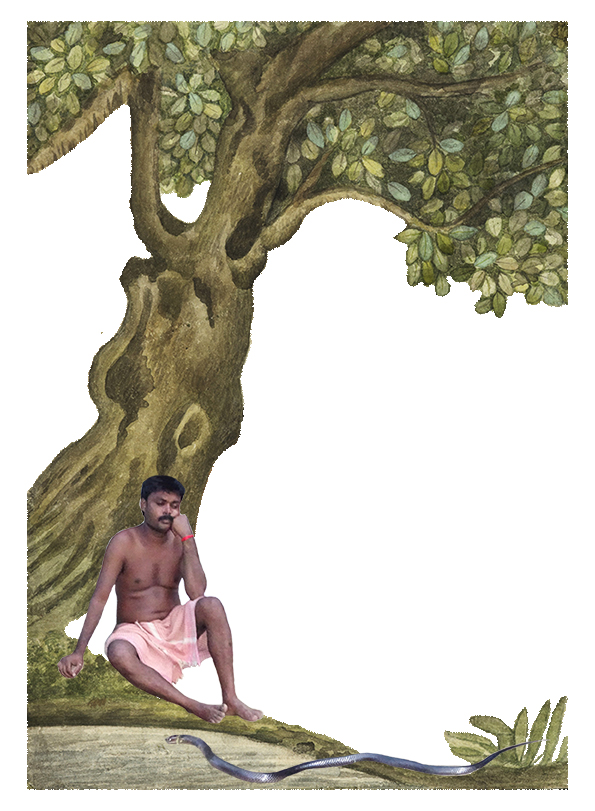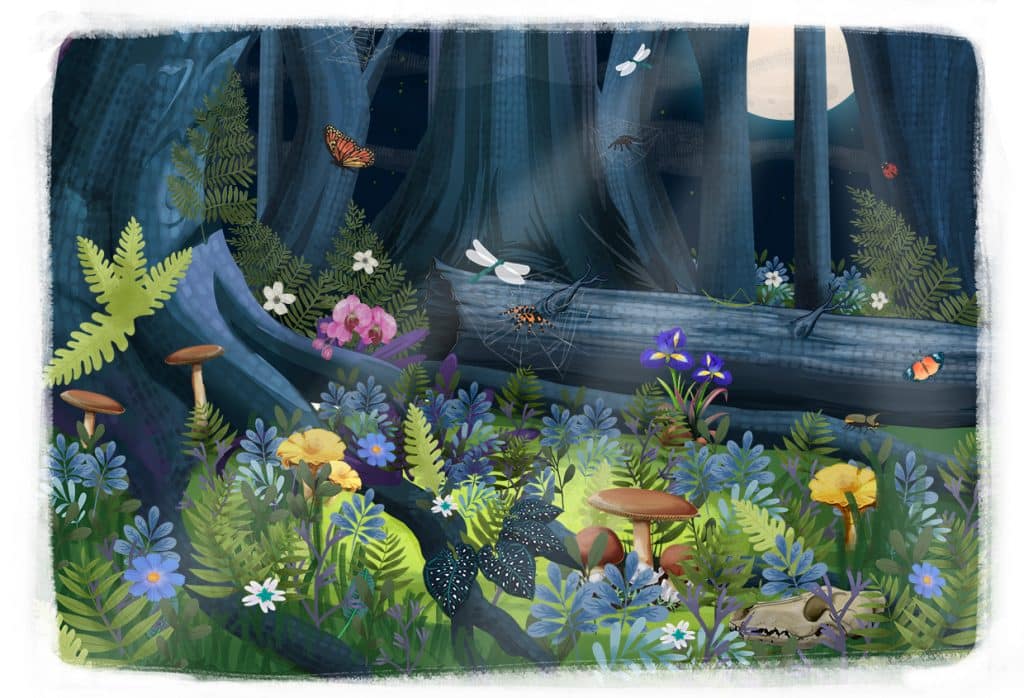Coexistence with reptiles? Surely a preposterous idea! For the common perception of reptiles is that they are primitive life forms, cold-blooded, anti-social, emotionless, vicious and not infrequently dangerous. Well, in this special issue we set out, not to persuade you to join the basking crocodiles on a sun-drenched riverbank, nor to clasp a chilly cobra to your chest, but rather to show you that, whatever the authorities may warn or the media may report in shouty headlines, coexistence between particular human communities and particular potentially dangerous reptiles does, in fact, exist. These are not just-so stories.
We do not propose that you read these fascinating stories and rush out to strike up friendly relations with crocodiles, snakes or Komodo dragons who are perfect strangers to you. These stories concern communities of people and reptiles who have become familiar and accustomed to one another over many generations. Rather, we suggest there is something to be learned about what is possible, to widen the bandwidth of what is conceivable concerning communities of humans and of reptiles sharing the same landscapes.
In searching out these stories, I deliberately looked for a range of species (you may notice my inordinate fondness for crocodiles, for which I here express whatever regrets may be appropriate in the circumstances) which are well known for their power and potency and potential to harm our species. The examples hail from many regions of the world—Komodo dragons from Indonesia, cobras from different parts of India, crocodiles from East Timor, the Philippines, the Solomon Islands, and Gujarat. This is to demonstrate that coexistence with reptiles is not some quirk of a particular region, human culture or species of reptile.
The authors of these stories know their Varanus banganorum from their Varanus marmoratus, their Osteolaemus tetraspis from their Osteolaemus osborni, so to speak. I have met at least one author of each story, read their scientific publications and enjoyed their conference presentations. I had the privilege of spending several days in the field in Vadodara, Gujarat, with esteemed Indian herpetologist Dr Raju Vyas, during which he also showed me the remarkable urban mugger crocodiles of that city.
This general introduction will focus on two major topics. First, the nature of reptiles and the sorry (but improving) state of the study of reptiles and perceptions of their capabilities. Second, on what we mean by coexistence with wildlife, and how studying coexistence might improve our civility to other kinds of creatures in the future. For it is undeniable that, if on occasion reptiles have bitten, chewed or even swallowed cherished members of our own species, it is also true that there is much to be desired in how we have treated reptiles in return, most of them innocent of the crimes we attribute to certain species or even to entire families of reptiles (think of the poor snakes).
Reptiles are diverse, social, and sophisticated
In 2021, Doody, Dinets and Burghardt published The Secret Social Lives of Reptiles, specifically to address the mistaken ideas that reptiles are, “solitary dull, slow-moving, and tiny brains and simple behaviour”, claims which they comprehensively demonstrate to be false “with actual data.” Even famous and influential biologists including Charles Darwin and Carl Linnaeus could not see past their mammal centric prejudices towards reptiles, expressing both their dislike of the appearance of reptiles, and their ill-founded assumptions about the primitive natures and habits of reptiles. It bears remembering that both these individuals came from regions rather poor in reptiles, certainly in comparison to the warmer regions of the world where most reptile species are found. (Twenty years on, living in London in the UK, I still pine for the lizards, skinks and geckos that so enlivened my childhood homes in northern KwaZulu-Natal, South Africa.)
You may not know that there are more than 11,000 described species of reptiles, more than every other group of tetrapods except possibly birds (which are arguably reptiles but customarily considered apart). And yet, reptiles have been given far less research attention than birds, fishes or mammals. This is partly because humans have less affinity to the ‘cold-blooded’ scaly reptiles, because some are dangerous and people fear and avoid them, because many are secretive and nocturnal, or they live in difficult habitats for humans to study them in, and much of their behaviour is therefore seldom observed.
Written observations of crocodile behaviour date back to the writings of the Greek historian Herodotus (5th century BCE), but it was only in the 20th century that parental behaviour was accurately described, for example by McIlhenny in Louisiana in the 1930s. Prejudice against crocodilians was so strong that even scientists who should have known better dedicated long sections of their descriptions of crocodiles to hair-raising tales of crocodile attacks, and advice on how to kill them. It was generally assumed that crocodiles eat their babies (not very adaptive, or likely, considering how long crocodylians have survived on earth).
When in the early 1970s, after a decade of patient observations, my father Tony described a mother Nile crocodile gently carrying her hatchlings in her mouth to a safe nursery area in the water, where she looked after them for several weeks, there was general uproar and disbelief. National Geographic, Time Life and the BBC dispatched film crews and photographers to capture evidence of this impossible claim. Of course, the crocodiles made them wait, and the desperate Americans flew in air conditioners and ice cream to help them survive the heat and humidity of darkest Zululand in crocodile nesting season.

Despite a series of fascinating findings and publications in the 1970s, it is only in this century that another surge in reptile studies has begun, revealing a staggering range of social behaviours spanning communications (including from embryo to embryo!), vocalisations on land and underwater (including infrasound), communal creches, parental care by both parents, constructions of homes by single parents or collaborative groups, the forming of social groups including long-lived family groups and communal living, group vigilance, kin recognition, many styles of reproductive behaviour, including long-term monogamy and extended and gentle courtship, cooperation in hunting and feeding, play behaviour and social learning.
The elaborate displays of crocodylians in mating season are probably the most complex in all the animal kingdom. They roar (or bellow), produce infrasound below the water creating a ‘dancing droplets’ effect above their submerged backs, perform head- and jaw-slaps, and do all this in a distinctive Head Oblique Tail Arched (HOT) posture (gharials don’t). They produce odours from glands, and there is much signalling, posturing, gentle rubbing and manoeuvring used to solicit or signal availability for mating, with additional sound effects. Such social displays are also found in many other reptiles, including chameleons, lizards, and turtles.
Part of our problem, when it comes to reptiles, is that we’re not very good at reading these social signals. We humans tend to miss the obvious cues, for example the partially raised, stiffened tail of a Komodo dragon, signalling irritation, or that the fearsome fellow is actually feeling threatened. Of course, some of these signals are subtle, some even use senses that we simply don’t possess. That said, as Harry Greene has argued, snakes have evolved a wide array of very obvious visual displays which, along with the ability to spit venom, are intended to fend off harassment by monkeys and primates, including even the dimmest of humans. Rattlesnakes rattle, saw-scaled vipers use their scales to ‘sizzle’, puff adders puff, cottonmouths have an open- mouth display, and of course cobras display their hoods. In the face of these well known cross-species communications, we can’t say we weren’t warned before a reluctant strike is made (and bites can be ‘dry’ bites meant to scare, not envenom). Of course, the problems arise when due to their camouflage, hiding, or being active at night, we trample snakes.
So, many reptiles are social animals, and as we’re constantly discovering (please go out and observe for yourself, there are many discoveries yet to be made) many reptiles including snakes are caring parents, notably pythons and pit vipers. Some rattlesnakes show a distinct fondness for sharing dens with family. All these complex behaviours and social interactions prove that reptiles are neither simple nor primitive, and we should abandon the idea that animals that don’t have brains like ours are unintelligent (think of all those clever “bird-brains”).
As to emotions, we have barely scratched the surface. The internet is full of (hair-raising, for us ‘experts’) footage of people feeding and even stroking huge wild crocodiles. In Costa Rica, Gilberto ‘Chito’ Shedden became famous for his relationship with a large American crocodile he had rescued, who he named Pocho. Pocho would swim and play elaborate games with Gilberto, a relationship that lasted for 20 years until the crocodile died of old age. In the US, people can be seen travelling around with their ‘comfort’ alligators. Play has been observed in crocodylians and turtles, but much remains to be learnt about this.
Coexisting with reptiles
I have discussed reptilian capacities and behaviour at some length in order to demonstrate that they are quite capable of complex social interactions, and there is evidence that this extends across species barriers, too. So, what do I mean by “coexistence”? In the first instance, I refer you to my previous article in Current Conservation, on coexistence with crocodiles in the wetlands of Gujarat (see Issue 15.1). To summarise, I am referring to the free-willed choice to cohabit landscapes and share certain resources with other species. This involves knowingly taking certain actions and avoiding others, which inflict costs on the persons or animals so acting, to enable coexistence and avoid, where possible, negative interactions (co-adaptation). Notice that in the stories included in this special issue, coexistence has developed out of the relations between local communities and their reptilian neighbours. It is not imposed by external authorities — this would be tolerance, not coexistence.
Finally, it is important that these stories are honest about the high costs of coexisting with potentially dangerous animals. Jan van de Ploeg, for example, begins his tale of coexistence with saltwater crocodiles in the Solomon Islands with a list of victims of crocodile attacks. All of the authors acknowledge the damage these species can inflict. But these communities have found ways of coexisting with them to varying degrees. This includes cultural beliefs informing human behaviour around these animals, along with indigenous knowledge about animal behaviour, all contributing to the possibility of sharing landscapes. Things do go wrong, sometimes tragically, and conservationists aiming to foster coexistence with dangerous animals must never forget this, as I have argued elsewhere. But this needn’t be framed as conflict—coexistence doesn’t require the absence of negative interactions to persist, it requires a socially acceptable approach to how to respond when things go wrong.
As Harry Greene and Marty Crump have shown, human (and primate) responses to reptiles are actually very diverse. I hope these stories inspire you to think again about the possibilities for human-reptile interactions. To consider what we may learn from particular stories of coexistence, while acknowledging the diversity of ways of coexisting with wildlife.

Fostering coexistence requires us to recognise it where it already exists, and resist interfering with this, or perhaps help mitigate against outside forces undermining it. It includes fostering coexistence where it does not exist. There is a role for snake catchers that enables those who wish to avoid killing a king cobra that has entered their home to choose a non-lethal response. There is a role for those explaining the ecological importance and benefit to humans of snakes in catching rodents that eat crops.
I hope some of you will support these kinds of efforts, and consider what we might learn from the Ata Modo of Komodo Island, villagers from the Malnad and Burdwan districts in India, the farmers of Cagayan Valley in the Philippines, fisherfolk from East Timor and the Solomon Islands, and the urban volunteers of Vadodara.
Further Reading
Crump, M. 2015. Eye of Newt and Toe of Frog, Adder’s Fork and Lizard’s Leg: the Lore and Mythology of Amphibians and Reptiles. Chicago: University of Chicago Press.
Greene, H.W. 1997. Snakes: The Evolution of Mystery in Nature. Berkeley: University of California Press.
Doody, S.J., Dinets, V. and Burghardt, G.M. 2021. The Secret Social Lives of Reptiles. Baltimore: Johns Hopkins University Press.
Pooley, S. 2021. Rethinking coexistence with wildlife in the wetlands of Gujarat. Current Conservation 15(1): 23-28.
Pooley, S. 2022. The challenge of compassion in predator conservation. Frontiers in Psychology 13: 977703. doi.org/10.3389/fpsyg.2022.977703


